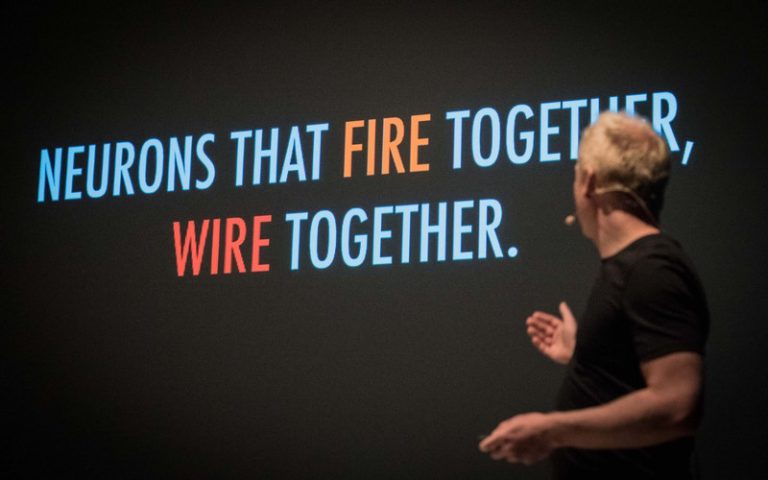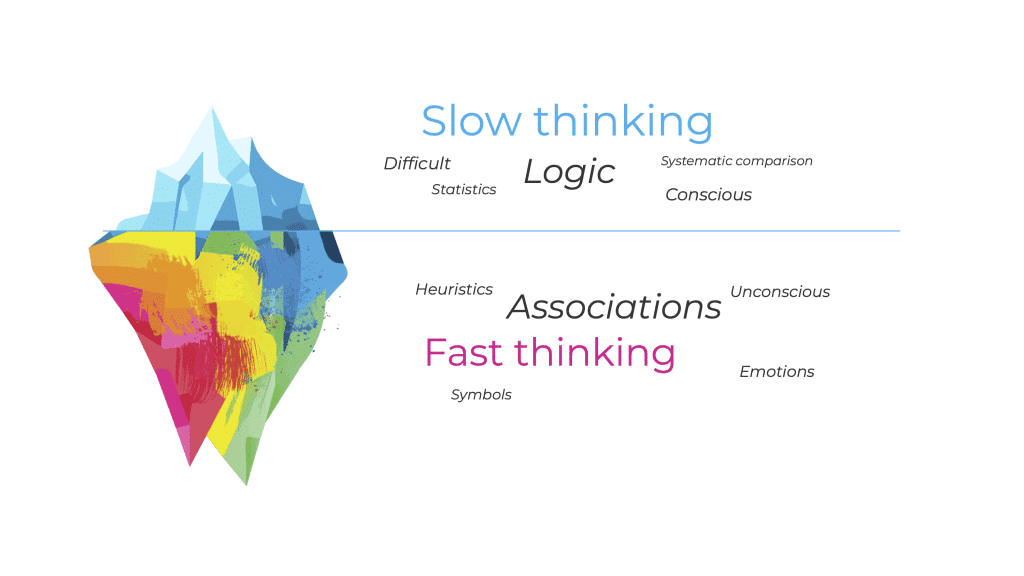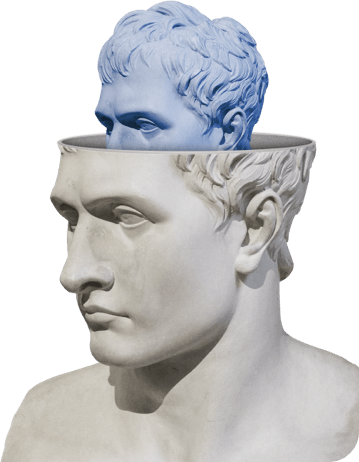Fastest memory path wins a market. Why?
-
 Jiri Boudal
Jiri Boudal
- 19. October 2022
People must decide subconsciously or they starve to death
Brand salience: people buy things that are most easy to think of
Imagine you are thirsty and want a soda: a particular brand simply pops up in your brain. Not a random one: a brand with the fastest memory connection to the need (wanting a soda).
In most cases, no further slow decisioning is needed – we simply take a brand we are thinking of from a shelf. Or type it in a Google search.
This fastest memory path from need to a particular brand is called brand salience – the most salient brand pops up in your brain. (It can be seen in brain scans. When people choose the strong brand, there is less activity in their brain compared to when they choose the weaker one. Strong, salient brands are literally no-brainers.)
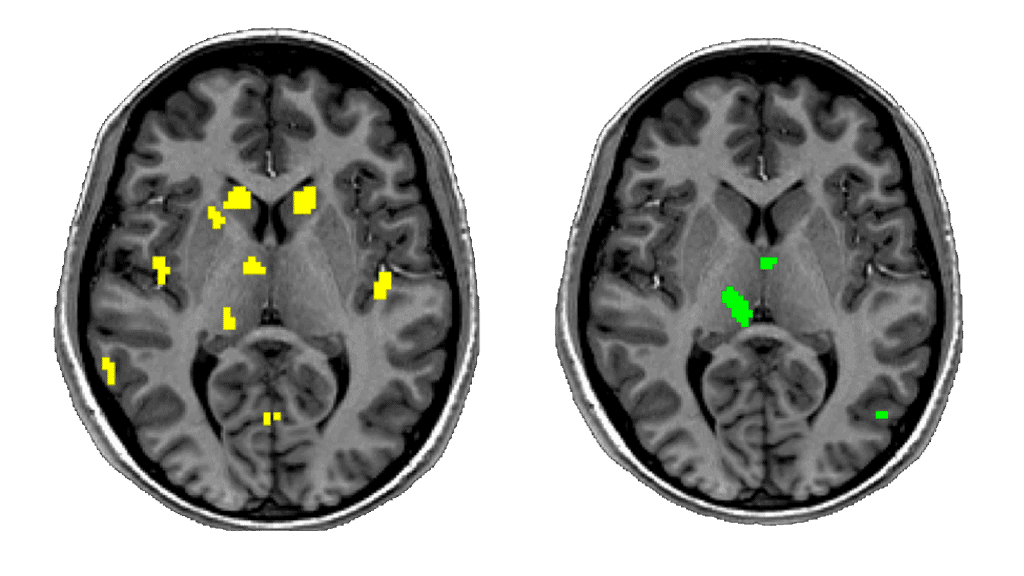
Given that 95% of decisions are results of this fast thinking, it’s no wonder that the most salient brands are those with the biggest market shares. In any industry, not just supermarket goods.
Why performance marketing can’t win you a market
Performance marketing can be a great tactical tool. But the notion that your big growth can be made through great performance marketing, precise targeting and immediate conversion is based on many false assumptions.
First false assumption: most people are ready to buy at the moment you are advertising. It’s the opposite. Vast majority of people are not at the market right now. You have to build salience, so that they think of you later, when they have the need and go buy your category.
Second false assumption: I should precisely target my ads to people who really want to buy me. What’s wrong with this? This is a great strategy for starting brands. But all big brands have most of their revenues from light-buyers. People almost don’t buy your category: most of Coke’s revenues for example come from people who buy it once or twice a year.
So this is the trap of performance marketing – you often target and convert the heavy buyers, who already know your brand and would buy you anyway, only a few weeks later.
Formally, you have a positive ROI but in fact you only wasted your money. This is not just theory. Many evidence shows that sales activation campaigns only lead to temporary spikes in sales, not to growth.
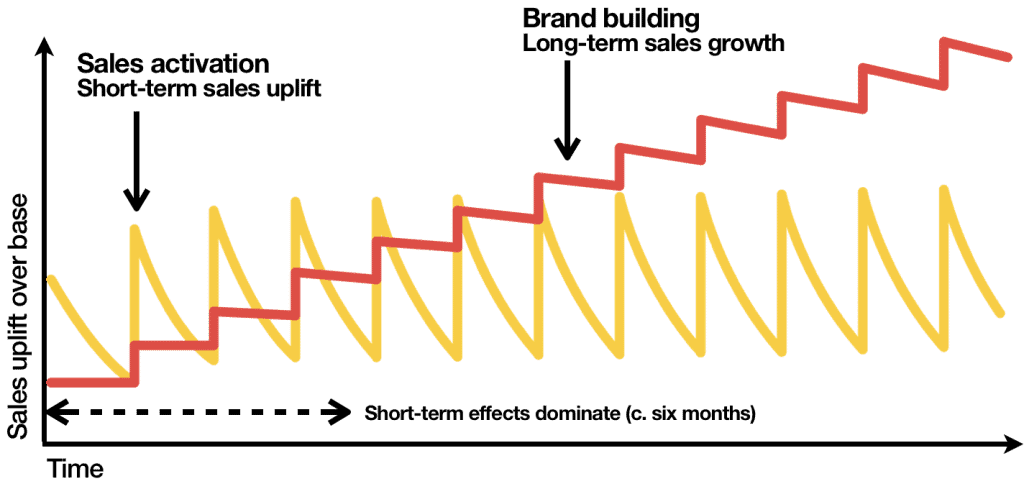
If you want to grow big, you don’t have any other option than to inject strong memories of your brand into as many brains as possible so that they later choose you when they go shopping. And the best known way to do this is to regularly advertise your brand in mass media. (By the way, salient brands have much cheaper PPC ads because people click on names they already know.)
How to build salience: 3 key ingredients
The basic principle of the brain, called Hebbian Rule, says Neurons that fire together, wire together. It means that when you activate one set of neurons – such as the ones that tell you you are thirsty for a nice soft drink – and simultaneously you activate another set – such as the one showing a distinctive brand symbol – and you keep repeating this scenario, again and again, the synaptic connection in between these to areas grows a muscle, becomes faster and eventually creates a memory bond.
Now when you reactivate one end (in our example you get thirsty), the neural highway reactivates the memory of the brand. And then… you go buy it. So you have two key ingredients of effective advertising – you have to vividly show both your brand and relevant customer need.
But there is a third critical component: getting attention. And that’s where emotion comes in. Strong emotional response gets your ad an attention. Ad gets noticed and the newly created memory pathways are remembered more deeply. It serves as an amplifier. That‘s why the role of your creative is so important in building salience – ads with great emotion, branding and need linkage simply build much more brand salience than bad creative with the same media spend.

And with the Behavio ad testing platform, you get a detailed feedback to these 3 key ingredients of your creative. And you can grow salience much faster than your competition.

